Reviews
Mechagojira no Gyakushu / Mechagodzilla’s Counterattack
Ishirō Honda
Japan, 1975
Credits
Review by Leo Goldsmith
Posted on 15 February 2013
Source Netflix VOD
Categories The Compleat Godzilla
And so it ends … at least for now.
Terror of Mechagodzilla, the fifteenth Godzilla film, is also the last of the original Showa series, and the last to be directed by its creator, Ishirō Honda. After a couple of commercial disappointments and dimming creative wattage, it finally came time for Toho to box up the rubber suit (if only for about a decade).
In this way, it’s a film of many lasts. It’s also the last film in which Akihiko Hirata would inhabit the role of the Interchangeable Mad Scientist, which he had perfected over a half-dozen other Godzilla films (including the original, in which he appears as the heroic one-eyed Dr. Serizawa). Hirata here plays mad scientist Dr. Mafune, and it’s a somewhat complex character who is both cavalier about exterminating the human race and also a little pitiable. It’s also one of the last - for a while, at least - to portray Godzilla as a good guy—the Heisei series, beginning in the 1980s, would return Godzilla to his status as a villain, perhaps mercifully expunging the excessively kid-friendly vibe of the late Showa films.
But while Terror of Mechagodzilla is not exactly a good film, it at least veers into slightly darker territory than some of the later Showa efforts. Once again, we have the old Monster Zero plot of an invading alien force, this time from the soon-to-be-vaporized Third Planet from the Black Hole, who scheme to use both an undersea dinosaur named Titanosaurus (under remote control by Dr. Mafune and a recovered and rebuilt Mechagodzilla to devastate planet Earth and pave way for new residents. This begins a complex plot whereby Interpol agent Murakoshi and oceanologist Ichinose from the “Ocean Exploitation Institute” seek out the truth about Titanosaurus and what’s making it blow up submarines and menace Japan with its hideous shriek and large fan-tail.
Of course, Planet Earth has two good weapons against Titanosaurus: Godzilla, for one, but also a super-sonic wave oscillator, which, they discover, is able to deter the aquatic dinosaur. This being consistent with earlier efforts, however, many minutes of plot-time must be taken up by complications and love-matches, but the film here is at least somewhat inventive by staging a possible romance between Ichinose and Mafune’s daughter Katsura. Like her father, Katsura is also conflicted, not least because she is part cyborg, and therefore partly controlled by the aliens. There is even a scene - cut for the US versions - in which Katsura’s inner machinery is fixed and her breasts are revealed. These are in fact prosthetic breasts, and not the actress Tomoko Ai’s natural ones, but still there is something distinctly desperate about this particular first among all of the film’s many lasts.
Naturally, Katsura’s robotic nature makes her a good controller for Mechagodzilla who, once repaired, tag-teams with Titanosaurus in a reasonably good final match-up against our hero. The two evil titans descend on Tokyo and, just as Titanosaurus is about to step on two curious young boys, Godzilla comes jogging out to kick ass, and the battle ensues. There is much humiliation. After an initial head-to-head with Titanosaurus that finds Godzilla in the lead, Mechagodzilla plays dirty with a combination of rainbow-laser-eyes and projectile-missile fingers. (These are identified by the human characters as “new weapons,” but are in fact only a subtle variation on those of the previous film.) Godzilla down, Titanosaurus then bites him on the mouth, rather implausibly picks him up by the jaws, and then tosses him down, celebrating this victory by a trumpety laugh that sounds rather like the undignified braying of an elephant. They then bury Godzilla under a mound of dirt, which Titanosaurus then jumps up and down on repeatedly. But then, in what might be precisely measured as a nick of time, the sonic beam is fixed, Titanosaurus is hobbled, and Godzilla is back in action to resoundingly (and rather quickly) defeat them both.
There is a shot at the film’s climax in which we see Godzilla walking out to sea, and perhaps with the foreknowledge of a sense of finality this shot houses some bittersweet quality. But maybe not, or at least Honda chooses not to milk it. Maybe there’s something classy about this—as with most of Godzilla films, there’s not much point dwelling on the denouement once the monsters are defeated and Tokyo (or wherever) lies in rubble.
More The Compleat Godzilla
-
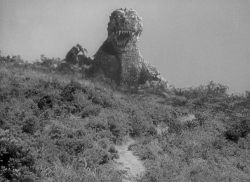
Godzilla
1954 -
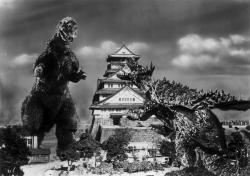
Godzilla Raids Again
1955 -
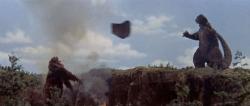
King Kong vs. Godzilla
1962 -
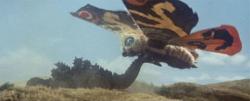
Mothra vs. Godzilla
1964 -
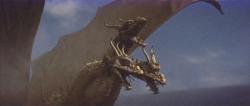
Ghidorah, the Three-Headed Monster
1964 -
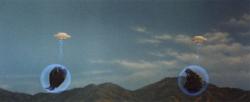
Invasion of Astro-Monster
1965 -

Ebirah, Horror of the Deep
1966 -
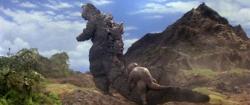
Son of Godzilla
1967 -
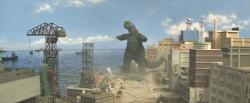
Destroy All Monsters!
1968 -
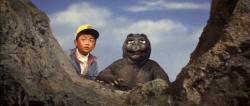
All Monsters Attack
1969 -
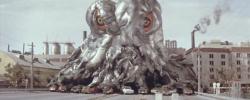
Godzilla Vs. Hedorah
1971 -
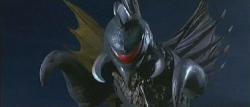
Godzilla vs. Gigan
1972 -
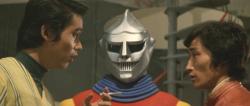
Godzilla vs. Megalon
1973 -
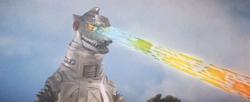
Godzilla vs. Mechagodzilla
1974 -
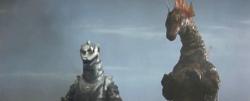
Terror of Mechagodzilla
1975 -
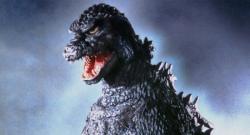
The Return of Godzilla
1984 -

Godzilla vs. Biollante
1989 -
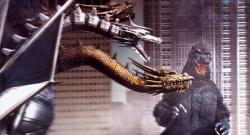
Godzilla vs. King Ghidorah
1991 -
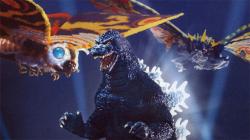
Godzilla vs. Mothra
1992 -
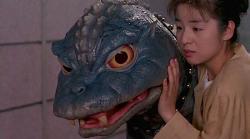
Godzilla vs. Mechagodzilla
1993 -
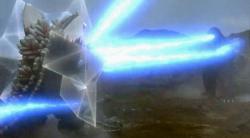
Godzilla vs. SpaceGodzilla
1994 -
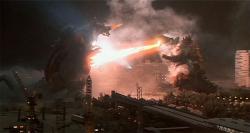
Godzilla vs. Destoroyah
1995 -
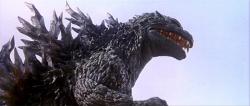
Godzilla 2000
1999 -
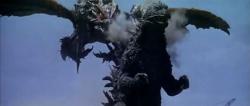
Godzilla vs. Megaguirus
2000 -
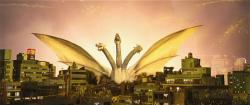
Godzilla, Mothra and King Ghidorah: Giant Monsters All-Out Attack
2001 -

Godzilla Against Mechagodzilla
2002 -
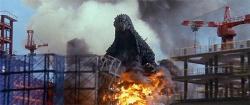
Godzilla: Tokyo S.O.S.
2003 -

Godzilla: Final Wars
2004
We don’t do comments anymore, but you may contact us here or find us on Twitter or Facebook.



